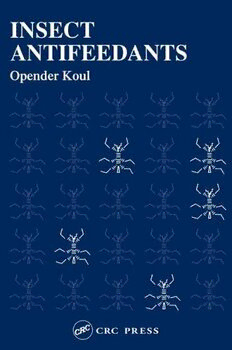
Insect Antifeedants PDF
998 Pages·2004·5.536 MB·English
Most books are stored in the elastic cloud where traffic is expensive. For this reason, we have a limit on daily download.
Preview Insect Antifeedants
Description:
Dependence upon neurotoxic chemicals as a means to control pest insects has lead to several problems: environmental hazards associated with broad-spectrum pesticides, negative impacts on non-target organisms such as natural enemies and pollinators, and the development of resistance to these chemicals among target species. Researchers have sought alternatives to these types of pesticides, looking to naturally occurring substances with multifactor selective pressures that will reduce the build-up of resistance.One particular area of study concerns feeding deterrence. Most plant defense mechanisms discourage herbivory by deterring feeding and oviposition or by impairing larval growth rather than killing the insect. There exists much research in this area, but it remains scattered throughout the literature. Insect Antifeedants compiles this information into a single text, presenting the various types of antifeedants, their mechanisms, species-specific bioassay procedures, modification of available antifeedants for use as insect control agents, commercialization aspects, and practical applications. The text concludes with a monograph presenting information on nearly 900 compounds, listed in alphabetical order, allowing speedy access to this critical data.Scientists and researchers interested in developing pest control chemicals that complement sustainable agricultural systems while ensuring environmental protection will find this an invaluable resource.
See more
The list of books you might like
Most books are stored in the elastic cloud where traffic is expensive. For this reason, we have a limit on daily download.
